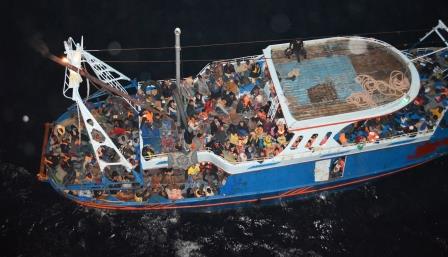A Danish report has exposed how the best management practice (BMP) measures recommended for shipping were insufficient to prevent the hijacking of the 1,780-dwt general cargoship Leopard (built 1989) in 2011, an incident which led to the crew being held for more than two years in Somalia.
The vessel was taken in January 2011 off the south coast of Oman at a time when the use of armed security guards was being discouraged and owners were advised to follow BMP instead.
It was April 2013 before six crew were released and it is only now that the full details of the attack have emerged.
The Leopard’s trade between Asia and Europe gave it considerable experience of operating in the piracy danger area off East Africa and of taking precautions to prevent pirates boarding.
“During a number of years, the shipowner, the operator and the various crews had launched a number of measures meeting the recommendations that later became international. However, these measures did not prevent the pirates from boarding the ship,” the report found.
The ship usually deployed two unarmed security guards, but they were told to disembark before the attack, as it was assessed that they could do little to protect the ship without firearms.
The Leopard was registered in Denmark and Danish law at the time did not allow armed security guards to stay on board.
The report is inconclusive on whether keeping the security men on the ship would have prevented the hijacking.
In the danger area, the ship took measures like placing razor wire around the hull and iron plates over external stairs.
The Leopard was equipped with a citadel, or safe house, and the ship’s master even practised zigzagging manoeuvres without losing speed as a navigational technique to avoid pirates.
The vessel was not able to deploy water cannons because of insufficient pump pressure and the danger such action would have presented to the crew.
Yet, despite the measures, things went badly when two pirate skiffs left their mother ship and approached the Leopard at 4:50pm. A distress signal was sent out, but the nearest protection force was 482 kilometres (300 miles) away.
As the pirates approached, a ship’s officer started zig-zagging. But when the attacking skiffs got very close, the master took over the steering and applied full helm to starboard, a decision which was to bring the vessel “almost to a complete stop”, the report said.
The pirates were then able to pull down the razor wire using their boarding ladder and gain access to the ship.
Although the crew made it to the secure room and locked the door, as they did so the carbon-dioxide (CO2) alarm in the engine room sounded. The crew was fearful that they could be poisoned by the gas and decided to surrender.
In attempting to operate the ship, pirates caused the engine to fail and the chief engineer could not repair the fault. That day the ship was abandoned and the crew taken hostage.
The report says the ship was in line with BMP and the crew and guards, when they sailed, even adapted it to their own experience of operating in the region.
“Already at an early stage, the guards used the BMP as guidelines, but gradually they realised that the measures described were not sufficient to prevent an attack,” the report said.
“Therefore, the security company had its own measures, primarily because the recommended measures followed a pattern that was known by the pirates and that the pirates were constantly developing methods for countering,” it continued.
However, two important factors left the Leopard dangerously at risk of hijacking. It had a maximum speed of only 10 to 11 knots, plus a low freeboard of just 2.6 metres that allowed the pirates to easily board.
Since the attack, the Danish government has passed a law allowing the use of armed civilian guards on national-flag ships.
And the subsequent use of armed guards has played a key role in reducing successful attacks against merchant shipping off East Africa.
Last year, the International Maritime Organisation (IMO) established a certification system for such security firms based on International Standards Organisation (ISO) approval.
UK-based security firm Solace said this week it is the first company to achieve the ISO Guidelines for Private Maritime Security Company certification.
For more maritime news see Tradewinds


